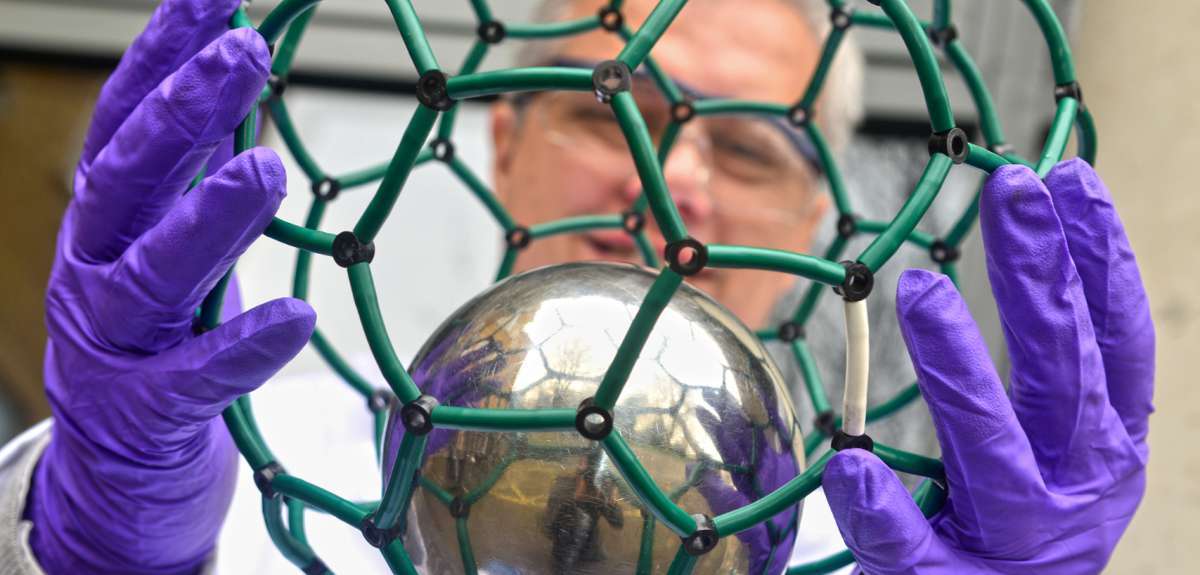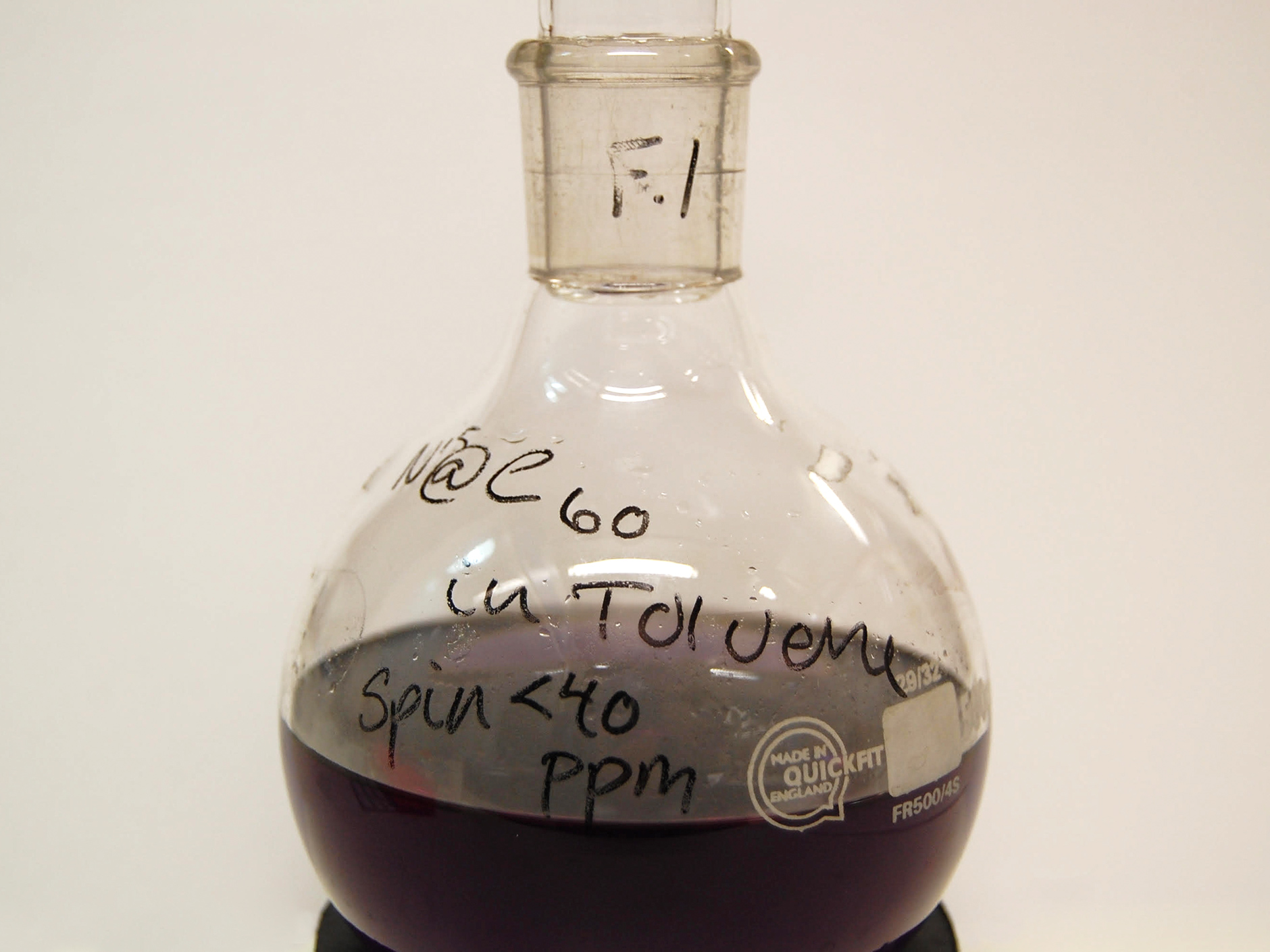 Approximately the molecule of nitrogen fullerene looks like. Nitrogen atom inside a carbon cell formed by 60 carbon atoms
Approximately the molecule of nitrogen fullerene looks like. Nitrogen atom inside a carbon cell formed by 60 carbon atomsThe modern GPS geographic system, developed by the US military, allows vehicles, gadgets and their owners to navigate in time and space. The system transmits data with enviable accuracy - about 1 signal per 100 nanoseconds. These signals are necessary for accurate navigation. Knowing the speed of propagation of radio waves, you can calculate your own location with an error of several meters.
But geolocation systems (GPS, GLONASS and others) cannot solve all the problems with time. The fact is that the satellites of such a system themselves “recognize” time by an atomic clock, which is very accurate. Nevertheless, the signal itself may fail - due to the influence of intruders or natural factors (solar storm or even a simple reflection of the radio signal from buildings). But what if an atomic clock is embedded in a GPS receiver?
These are not idle thoughts, but a real project, the description of which is published in the authoritative publication
Physical Review Letters . Such mobile atomic clocks, according to the authors of the study, are really possible. Also, scientists hope to soon create a similar "mechanism."
The heart and functional center of any atomic clock is a tank with evacuated air and a "cloud" of vaporous metal, usually cesium. Atoms resonate with a certain frequency, which is fixed with the help of instruments. At the same time, cesium atoms are “indifferent” to physical effects on the watch, to vibrations and other factors to which, for example, wrist watches are very sensitive. Dimensions of such systems are very different. But there are already atomic clocks, the size of which does not exceed the size of a small suitcase.
And in 2004, even more miniature systems developed by scientists from the National Institute of Standards and Technology appeared. They were able to reduce the size of the atomic clock to the size of a single chip. Such systems are used in a number of areas of science and technology, including military and underwater navigation. But, unfortunately, miniaturization greatly affects the price. The smaller the atomic clock, the more expensive they are. The fact is that producing such systems is extremely difficult.
In general, one can hardly expect the appearance of atomic clocks of this type in laptops or phones. Even if they appear, the device will be very expensive. And hardly at the cost of a couple of tens of thousands of dollars the phone will be popular, and in fact it is demand that generates supply, and technologies go to the “masses”. Until it is possible to cheapen the production of such systems, miniature atomic clocks will remain the lot of a narrow circle of specialists. Perhaps the military will be able to pay for such systems, perhaps NASA and other space agencies. But exit "in people" will not take place.
An alternative way to create an atomic clock, proposed in 2008 by Andrew Briggs and Arzhang Ardavan of Oxford University, can be a way out of this situation. Scientists have proposed to forget about the vacuum and the metal pair, and simply close a single nitrogen atom in the carbon cell. This cell is an endohedral fullerene.
Endohedral fullerenes are
fullerene molecules with one or more atoms or molecules in a cell.
One of the most suitable for the purposes of fullerene experimenters is N @ C
60 . This is a nitrogen atom inside a cell of 60 carbon atoms. This structure resembles a soccer ball. The nitrogen atom, in fact, moves freely in this cell, preserving its properties. By the way, scientists have already created similar structures with helium and neon. But, as it turned out, it is the nitrogen atom in its “cage” that is ideal for creating miniature atomic clocks.
Here there is an interesting nuance - N @ C
60 is a molecule that should not exist, since the reactivity of the nitrogen atom is very high. To create a complex structure of this type requires special conditions, which can be called extreme. The fact is that pushing the nitrogen atom into the carbon structure is about the same as forcing tap water to flow upwards. This is a thermodynamic feature of such a reaction. But as soon as the structure is formed, it immediately becomes stable, since carbon isolates and stabilizes the nitrogen atom. Thus, the resulting product can be stored without any problems.
In the laboratory at Oxford University, they found a way to produce nitrogen fullerenes, if not massively, then quickly enough. It uses a method called "ion implantation". The fullerene is heated to the evaporation temperature in a vacuum tank, after which they are deposited on the substrate. Forms a thin film of C
60 . While this film is growing, it is bombarded with nitrogen atoms. Some of them get stuck in the film, forming the desired structure. True, the performance is very low: a molecule of "nitrogen fullerene" is formed 1 time for 10,000 cases.

After the procedure is completed, it is necessary to allocate N @ C
60 . The problem is that the chemical properties of C
60 and N @ C
60 are almost identical. However, the differences are still there. This is, firstly, molecular weight, secondly, polarizability. These two differences make it possible to extract nitrogen fullerene using a method known as high pressure liquid chromatography (HPLC).
In conventional chromatography, substances with different chemical characteristics are separated from each other, passing, for example, through special paper fibers. In the case of high pressure chromatography, the principle is the same, but the substance is driven through the “separator” under pressure. In the case of separation of nitrogen fullerene, the operation must be carried out many times to separate C
60 from N @ C
60 .
So what about the atomic clock? In this case, a generator is used that emits a radio signal whose frequency is close to the absorption signal of the radio signal by nitrogen. This signal is transmitted through the antenna into the tank, where the molecules of nitrogen fullerene are located. It may be a powder or a solution. If the oscillator is properly tuned, the radio signal is absorbed. If not, the signal passes through the solution / powder. Using a special system of configuration with feedback, scientists have achieved an automatic adjustment of the signal to the required parameters. All this can be used to create an atomic clock.
Now the main task that scientists face is the creation of a miniature chip based on a fullerene molecule. Such a system will be devoid of optical elements that are commonly used in atomic clocks. Also maintenance of vacuum is not required. Such systems will be miniature and energy efficient. They can also replace quartz oscillators used in modern electronic time tracking devices.
 The solution of fullerenes in the flask
The solution of fullerenes in the flaskAccording to the creators of this technology, there are many ways to apply it. Portable, ultra-precise watches are needed by everyone - the creators of electronic devices, military, scientists, doctors. As for the GPS system, the signal can be caught even indoors. This will be facilitated by the placement of atomic clocks inside the electronic device itself, the receiver. The GPS signal will be very difficult to drown out - now it’s quite simple to do. Even if the satellite network is partially damaged (some satellites fail), GPS receivers on Earth with an atomic clock built in will work.
In addition, it will be possible to create miniature geographic systems for vehicles, customs, and postal services. Parcels and equipment can be tracked without any problems, even during the passage of such systems through tunnels.
Of course, to create a commercial system is still far away - scientists need to interest companies with their invention. By the way, there is nothing in nitrogen fullerene - $ 266 million for one gram of substance. Endohedral fullerene, in fact, has become the most expensive substance on the Earth, second only to antimatter (it is impossible to fix it in any significant quantities yet). According to some estimates, 1 gram of antimatter will cost 48 trillion dollars. But this is if a practical way of storing antimatter is found.